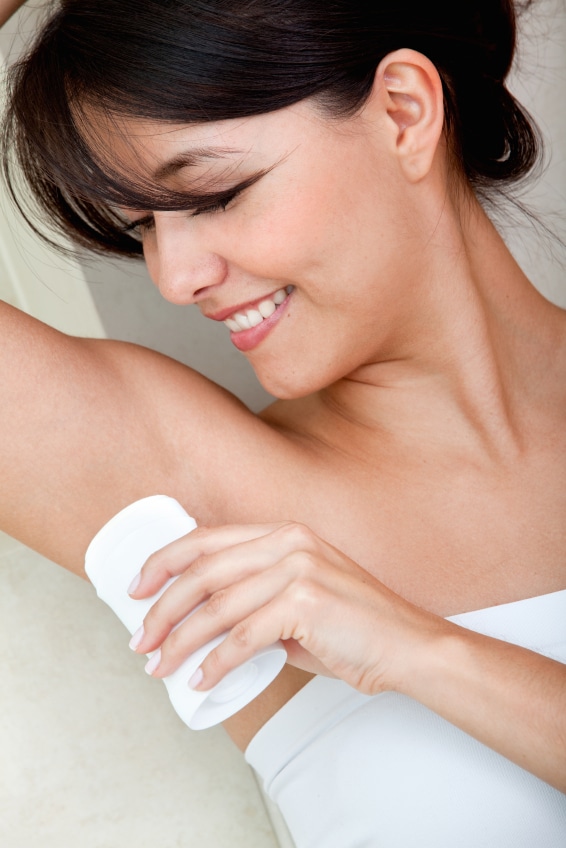Deodorants
Using a deodorant or antiperspirant has become a normal part of a daily personal hygiene routine. An antiperspirant is intended to reduce sweating, a deodorant to reduce and mask the unpleasant smell of stale sweat. On the market today there are numerous products on offer using several methods of applying the deodorant and/ or antiperspirant in various formulations, some offering protection times of up to 96 hours.

What is sweating?
Sweating is a completely normal and essential bodily function. This is the mechanism the body uses to regulate temperature, prevent overheating, and maintain it at 37°C. Human skin contains over 3 million sweat glands. They reach down into the depth of the dermis and the subcutaneous fat layer. From there they spiral up into the epidermis and open onto the surface of the skin.
The eccrine sweat glands produce water-based sweat and can be found all over the body. These glands are particularly numerous on the palms of hands, soles of feet, armpits and forehead. In the groin, behind the knee and the crease of the elbows there are 350-700 sweat glands per square centimetre, more than in other areas of the body where 50 glands per square centimetre is normal.
Women have fewer sweat glands than men and have a lower rate of sweat production under the same body stress conditions. Sweat is water-based and consists mainly of natrium chloride which cools the body by evaporation (thermoregulation). Sweat tastes salty because of the natrium chloride. Heat, physical exertion and emotions (e.g. sweaty hands before an exam) can all stimulate sweat production. The use of an effective antiperspirant can help to block and/ or reduce sweating.
Why do we smell sweaty?
The large apocrine sweat glands characterise our individual body odour. They are present in the armpit, around the nipple region, belly button, genitals and the auditory canal. Activated by psychological stimulation, the apocrine glands secrete a fatty cloudy substance into the funnel shaped opening of the hair follicles. The apocrine glands are actually part of the hair follicle structure so the term “sweat gland” is misleading. The apocrine glands become active in puberty, are steered by the body´s hormones, and continue secreting into old age albeit much less than in puberty. Fresh secretions are odourless; the individual sweaty odour is created by the break-down of the secretions on the skin´s surface by bacteria. An effective deodorant can mask the unpleasant odour of apocrine secretions.
An effective deodorant/ antiperspirant can be produced using various mechanisms: ACH (aluminium chlorhydrate), aluminium-free, zirconium salt, enzyme blockers, anti-bacterial ingredients for example. The modern market is keen on variety in packaging and application choice e.g. sticks, roll-ons, clear milk emulsions, atomisers, aerosols, and “deodorant –towels” …